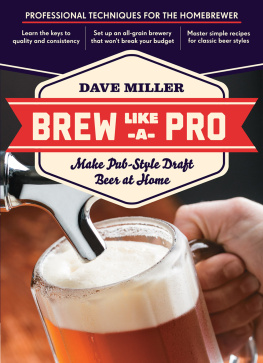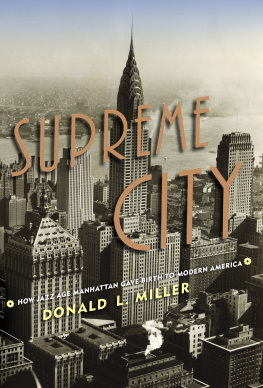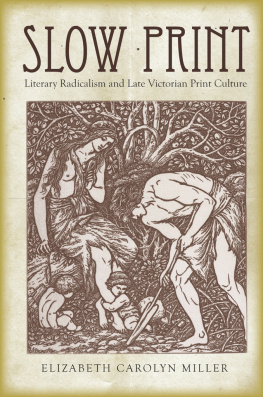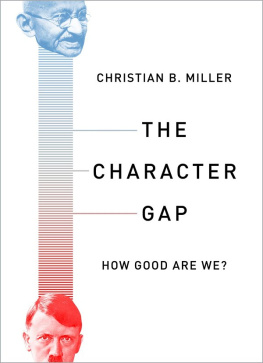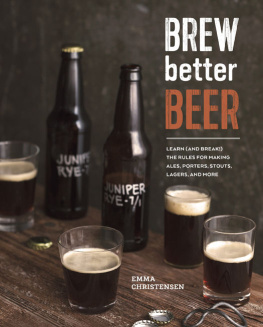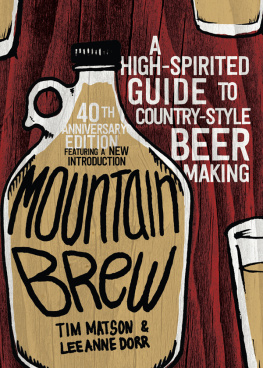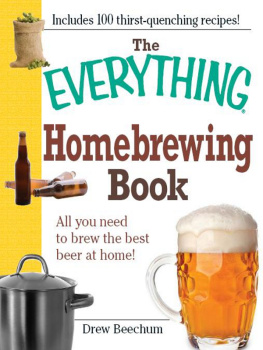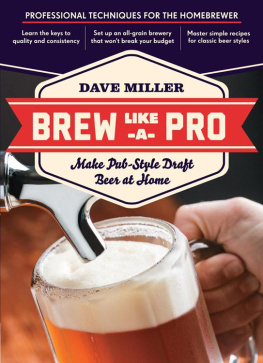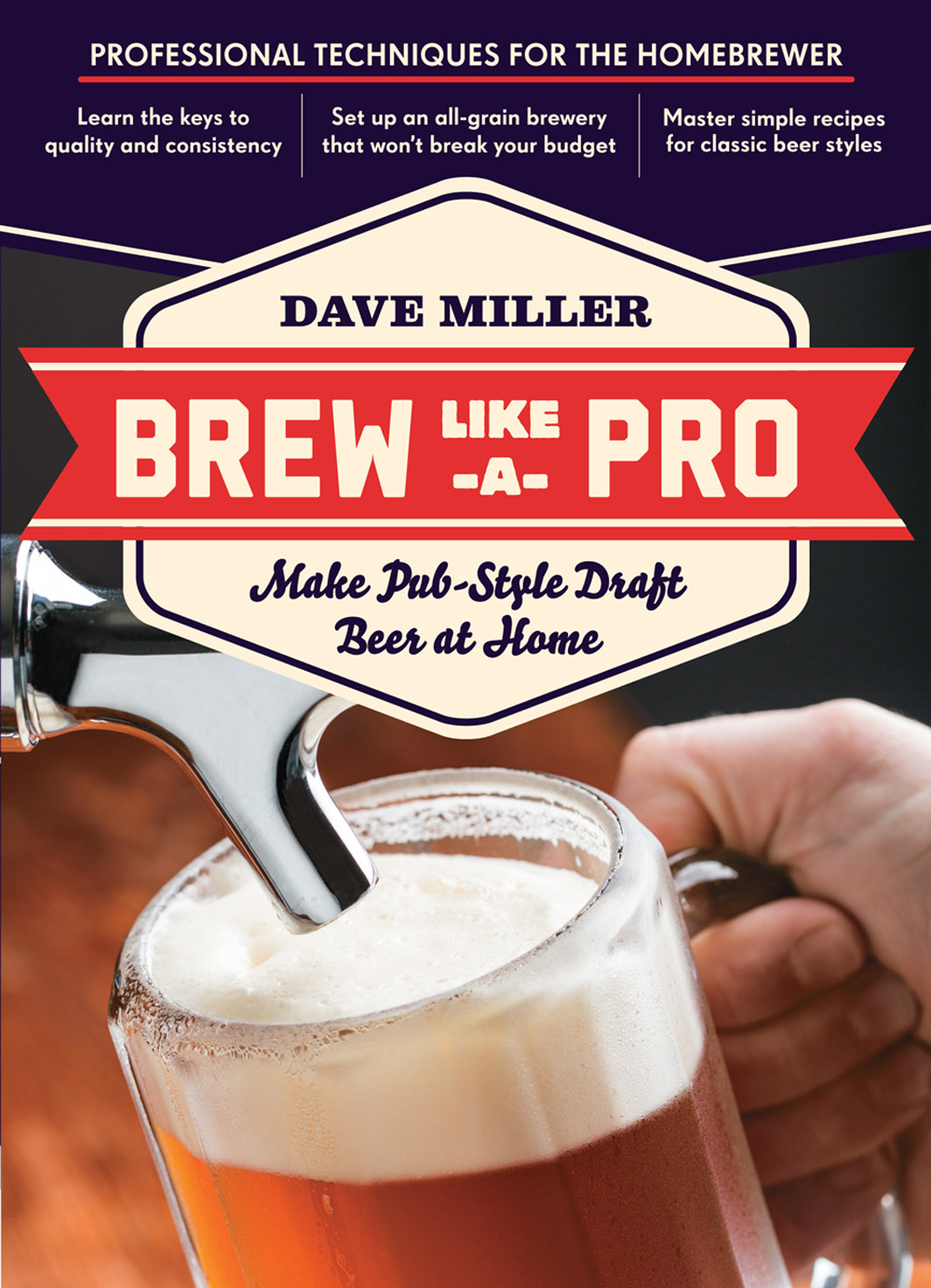The mission of Storey Publishing is to serve our customers by publishing practical information that encourages personal independence in harmony with the environment.
Edited by Margaret Sutherland and Nick Kaye
Art direction by Jessica Armstrong
Cover and book design by MacFadden & Thorpe
Front cover photograph by Lara Ferroni
Inside front and inside back cover photography by Mars Vilaubi
Photograph on page 99 provided by the author
Illustrations by Steve Sanford
Indexed by Christine R. Lindemer, Boston Road Communications
2012 by Dave Miller
All rights reserved. No part of this book may be reproduced without written permission from the publisher, except by a reviewer who may quote brief passages or reproduce illustrations in a review with appropriate credits; nor may any part of this book be reproduced, stored in a retrieval system, or transmitted in any form or by any means electronic, mechanical, photocopying, recording, or other without written permission from the publisher.
The information in this book is true and complete to the best of our knowledge. All recommendations are made without guarantee on the part of the author or Storey Publishing. The author and publisher disclaim any liability in connection with the use of this information.
Storey books are available for special premium and promotional uses and for customized editions. For further information, please call 1-800-793-9396.
Storey Publishing
210 MASS MoCA Way
North Adams, MA 01247
www.storey.com
Printed in the United States by Versa
10 9 8 7 6 5 4 3 2 1
Library of Congress Cataloging-in-Publication Data
Miller, David G., 1945
Brew like a pro / by Dave Miller.
pages cm
Includes bibliographical references and index.
ISBN 978-1-61212-050-8 (pbk. : alk. paper)
ISBN 978-1-60342-852-1 (e-book)
1. Brewing. I. Title.
TP570.M46 2012
663'.3dc23
2012032601
Acknowledgments
I want to thank the members of the Music City Brewers for their help with a project that became part of this book. I appreciate the continued camaraderie of the St. Louis Brews. Josh Garrett, a dedicated homebrewer who was once my assistant and is now chief brewer at Blackstone Restaurant & Brewery in Nashville, gave me the benefit of his experience during the writing of this book.
I owe a debt of gratitude to my first employers, Tom Schlafly and Dan Kopman of the Saint Louis Brewery. They gave me a chance to prove I could make beer that people would buy. I am also grateful to Kent Taylor and Stephanie Weins, owners of Blackstone Restaurant & Brewery, where I worked from 1994 until my retirement in 2008. Throughout my career, I was fortunate to work for people who love good beer.
I want also to thank all the many teachers I have been privileged to learn from during the course of my life as a brewer. My instructors at Siebel must be mentioned, and then the brewing team at Schlafly, especially Stephen Hale and James Ottolini. Lastly I thank Greg Noonan, whom I knew only slightly but who through his writing taught me almost as much as anyone.
Dedication
I dedicate this book to the memory of George Fix. To have been his friend is reward enough for my involvement in our common endeavor. George ended his inscription in my copy of his book with, P.S. God smiles on those who brew beer. I believe that.
Requiem aeternam dona ei, Domine, et lux perpetua luceat ei.
Contents
For those of you who do not know me, I guess I need to tell you a little about myself and my involvement in the world of craft beer. I started out as a homebrewer, but after about 15 years I turned pro and pretty much got away from the hobby side. I quickly discovered that brewing in a pub is a tough job, even for a young man. It requires lifting and lugging heavy sacks, crouching and kneeling on hard floors, filling (by hoe and shovel) and moving cartloads of wet spent grain, and much other heavy labor. For a middle-aged man, as I was at the start, it was a test of dedication.Every night I came home tired and sore, and the last thing I wanted to think about on my days off was making beer.
It took a year of retirement from professional brewing before my interest began to revive. This book is a field report of my reentry into homebrewing. A lot changed in homebrewing while I was away. I hope I am not being presumptuous in saying that I had something to do with that.
I made my first batch of homebrew in 1976. It was a typical recipe of the time, made with a 2-pound can of malt extract (actually partly corn syrup), 4 pounds of corn sugar, half a 4-ounce brick of compressed kettle hops (lacking a scale, I just cut the brick in half it was brown all the way through), a 1-ounce bag of finish hops (loose in a plastic bag, a little greener than the hop brick), and a packet of lager yeast (origin/manufacturer unspecified).
The result was just what you would expect. It smelled more like cider than beer. It was thin as water, with barely a hint of malt character, and had a bitterness level that was way out of balance with its ultralight body. I took a bottle to the owner of the local shop where I had purchased the ingredients, and he poured some into a glass, swirled it around, sniffed and tasted, and with a laugh announced, Thats good beer.
That should have been the end of the story. For the life of me I cannot explain why I persisted, but I did. I read every book I could find on the subject of homebrewing, profiting little from most of them, but eventually discovering The Big Book of Brewing, written by an Englishman named Dave Line. This chap had the temerity to suggest that homebrewers can, and should, take the trouble to make their beer from malted barley and other grains, just as commercial brewers do. That set me off.
In 1981 I won Homebrewer of the Year at the AHA (American Homebrewers Association) national competition, with a Dutch pilsner that today, Im sure, would not make it out of the first round. But that was then, and the award confirmed what I already knew: that Dave Line was right. All-grain brewing, as it is still called in the homebrew world, is the way to make beer.
Then and Now
Homebrewing has come a long way since then. As the craft beer movement has taken off, the marketplace has responded to the corresponding growth of the hobby, and today homebrewers have access to just about everything available in the line of ingredients, including fresh hops of all varieties, every type of malted barley, and dozens of strains of yeast from breweries all over the world. In that respect, the playing field has been leveled. The best beers that I have tasted in homebrew competitions are beers that practically any professional brewer, including me, would be proud to sell.
Likewise, the information explosion has benefited the hobby just as it has so many other pursuits. Books, magazines, and websites abound. Once I got the itch to homebrew again, I read a lot of the new material. I got excited by the prospects of quick, simple, all-grain brewing using products and techniques that promised commercial-quality results with little effort and a minimum of equipment. In fact, my initial plan was to use only low-cost off-the-shelf gear, permitting myself just one exception: a lauter tun that I decided to build because the design I preferred is not available ready-made.

